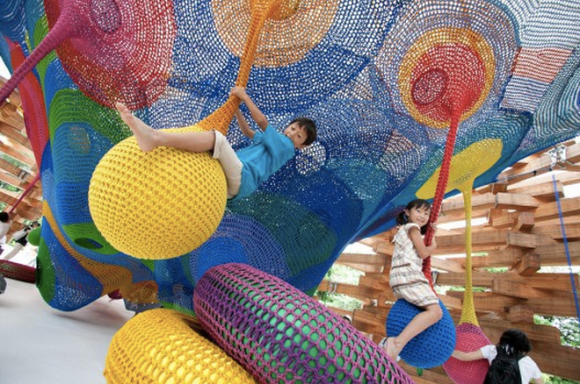
Last week, we had a round-up of my choices for the seven stupidest art pieces in Tokyo, but lest you think I am just a negative Nelly incapable of appreciating talent and beauty, this week we’re presenting Tokyo’s seven coolest public art pieces.
Again, let me start with the standard disclaimer about the subjectivity of art, the changeability of generational, societal and personal preferences, yada yada yada. Now here are my choices:
Steampunk Clock by Hayao Miyazaki
Anime fans will like this one. Did you know that the Nippon Television building in Shiodome is home to the world’s largest animated clock, designed by none other than Spirited Away and The Wind Rises creator Hayao Miyazaki? It springs into life five times a day, with a short mechanical show set to music. As you might imagine, this is hugely popular with children, and quite a lot of adults as well.
Sure, this is a pop culture-influenced piece that doesn’t have the gravitas of, say, Prague’s astronomical clock, but it does have all the earmarks of a successful public art piece: it’s beautiful, it’s functional, and it both enriches and draws inspiration from the surrounding community.
Senaka Awase no Maru by Felice Varini
Swiss artist Felice Varini has a knack for messing with your mind. He uses a projector and stencil to make geometric images that pop out at you in depth-perception-defying ways if you are standing in just the right position. Like the whispering gallery in Grand Central Station, his work creates a kind of Easter egg for those in the know about a city. So next time you are in Tachikawa, impress your friends by knowing just where to stand to make the seemingly random black lines on the overpass and stairs turn into a giant, floating circle.
Fossils of 20th Century Civilization by Shoichiro Higuchi
One place where Tokyo really excels at public art is in the train and subway stations, in particular the Toei lines. That company has turned entire stations into art projects! But possibly one of the neatest pieces can be found stretching the entire length of a platform at Kiyosumi-Shirakawa Station. The artist has used all kinds of industrial metal relics, like nails, chain links, and gears, to create a giant mural with lovely geometric patterns. Each time you look at it, you notice something new, and unlike a lot of station art placed in walkways, the location of this one ensures you have plenty of time to consider it.
Figure of Underground Railroad by Akira Yamaguchi
Subway walkways can be kind of dark and sterile places, but some smart person at Nishi-Waseda Station realized that backlighting a stained glass artwork would give the illusion of sunlight underground and it changed the whole atmosphere of the station. Waseda is well-known for its wealth of educational institutions, including the prestigious Waseda University, and the piece makes reference to the intellectual life of the neighborhood in the details, showing elementary school kids in their uniforms, heads together over some bit of homework, college-age youths waiting for the train with musical instruments strapped to their backs, and professor types hurrying down the stairs. There’s also an interesting anachronistic quality to it, with some people wearing Showa-era clothes and others clearly talking on cell phones.
Myth of Tomorrow by Taro Okamoto
OK, one more piece of station art. Anyone who has been to the youth culture hub of Shibuya will probably recognize this huge mural near the entrance to the Inokashira Line. It’s by Japanese avant-garde darling Taro Okamoto, in his signature abstract style and primary colors. The painting mainly depicts the bombings of Hiroshima and Nagasaki, but other small details that reference the dangers of nuclear technology are included, such as the Fukuryu-maru 5, a fishing boat whose crew and cargo were unknowingly subjected to massive doses of radiation from nuclear tests in the Bikini Atoll. It is so representative of the anti-nuclear movement that a Tokyo art collective secretly added a panel depicting the crippled Fukushima Dai-ichi reactors in 2011.
Duality by ART+COM
The very best public art fits seamlessly into the surroundings, serving a functional purpose while also providing an artistic experience for those that stop to enjoy it. An excellent recent example is a piece in Shinagawa that unobtrusively uses LED screens and weight sensors to make an interactive artwork out of a simple walkway to the station. The glass tiles over the LED screens are equipped with load cells measuring the exact position and power of each footstep, triggering corresponding virtual waves on the screens that continue as actual waves in the adjacent pond. It’s an entrancing synthesis of the virtual and actual worlds with you as the nexus, or—if you are late for your train—it’s not a big statue getting in your way.
Showa Rainbow Hammock by Toshiko Horiuchi MacAdam
Artist Toshiko Horiuchi MacAdam creates sprawling, hand-knit, rainbow-colored creations that are meant to be crawled over, hung from and bounced off in a very hands-on style of art appreciation. The story goes that MacAdam had a gallery show once where a child asked if it was OK to touch her work. Rather than trying to protect it from little hands, she encouraged him to climb all over it. Since then, she has been working with a Japanese structural engineer to create fun and safe installations for kids to enjoy. The picture above is from Tokyo’s Showa Kinen Park, but I confess my favorite work of hers, shown at the top of this article, is actually just outside of Tokyo at the Hakone Open Air Museum. Look at that beautiful crazy yarn playland and tell me your inner child isn’t itching to try it out.
OK, readers, those are my choices. How about yours? Got a favorite piece in Tokyo or your hometown? Tell us in the comments!
Source: RocketNews24
Images: NetPlayWorks (top), Afar (clock), @ART, ART+COM (Duality), Sugusugu (hammock)

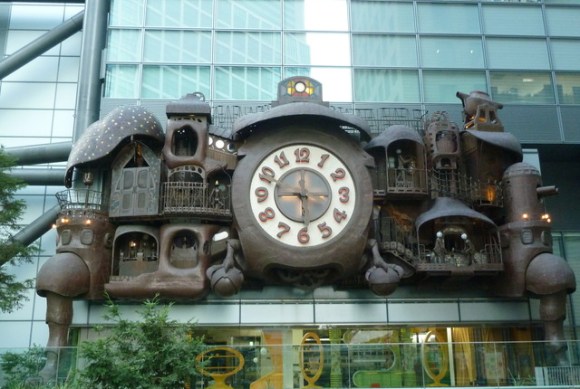
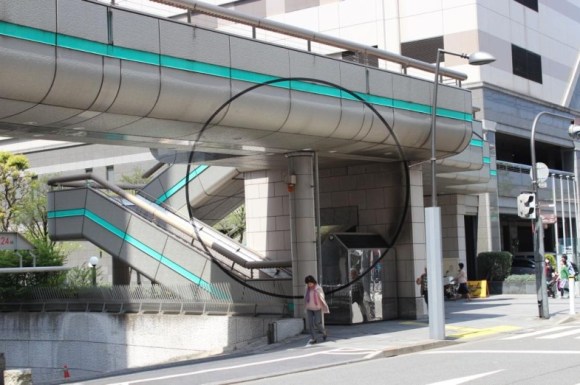
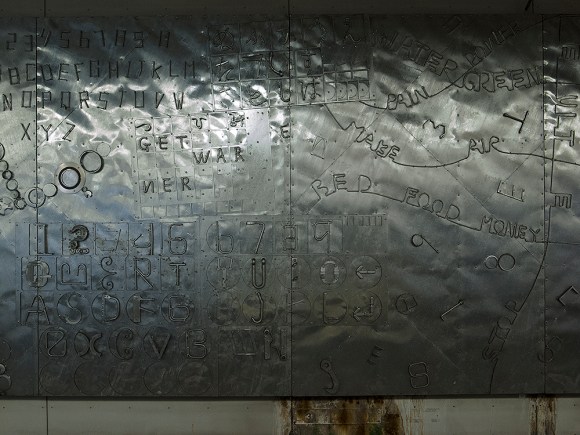
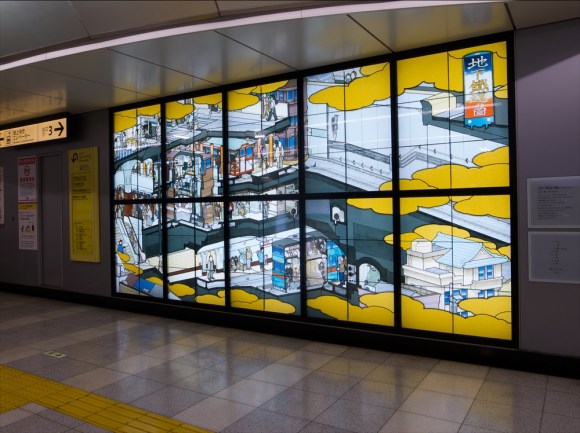
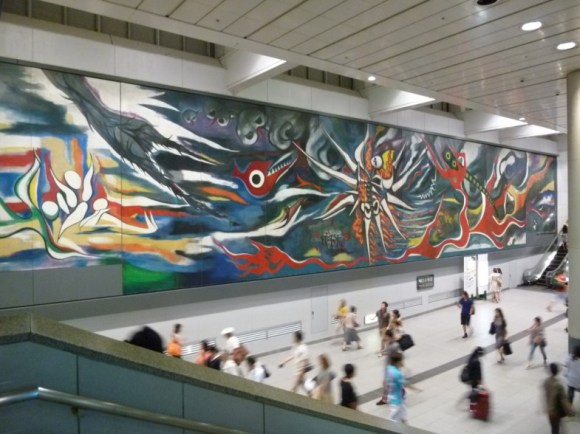
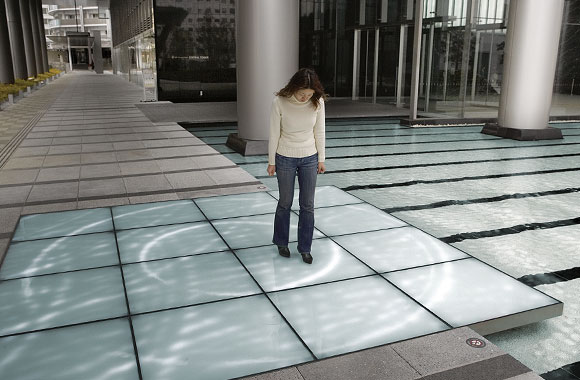
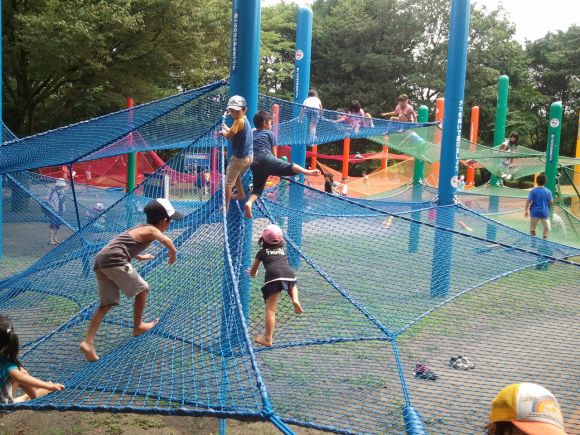
 Tokyo’s 7 stupidest public art pieces
Tokyo’s 7 stupidest public art pieces Shibuya’s Hachiko Family public art installation will be permanently removed, not relocated
Shibuya’s Hachiko Family public art installation will be permanently removed, not relocated Tokyo train stations to host Super Mario box/character art displays to celebrate 35th anniversary
Tokyo train stations to host Super Mario box/character art displays to celebrate 35th anniversary Japanese public toilet becomes a tourist attraction in Tokyo
Japanese public toilet becomes a tourist attraction in Tokyo Tokyo art gallery encourages visitors to steal its art
Tokyo art gallery encourages visitors to steal its art Hayao Miyazaki says Happy New Year to Studio Ghibli fans with new art for Year of the Horse
Hayao Miyazaki says Happy New Year to Studio Ghibli fans with new art for Year of the Horse More Than a Capsule Stay: Why Solo Travelers Choose “global cabin Yokohama Chinatown”
More Than a Capsule Stay: Why Solo Travelers Choose “global cabin Yokohama Chinatown” Japan’s otoshidama tradition of giving kids money at New Year’s gets a social welfare upgrade
Japan’s otoshidama tradition of giving kids money at New Year’s gets a social welfare upgrade Japanese thug wear from Birth Japan perfect for those breaking bad next year
Japanese thug wear from Birth Japan perfect for those breaking bad next year One Piece devil fruit ice cream coming back to Baskin-Robbins Japan
One Piece devil fruit ice cream coming back to Baskin-Robbins Japan The old-school awesomeness of the New Akao, a Showa-era hot spring hotel still standing tall
The old-school awesomeness of the New Akao, a Showa-era hot spring hotel still standing tall Pizza Hut Japan’s hot lucky bags are perfect for a New Year’s pizza party
Pizza Hut Japan’s hot lucky bags are perfect for a New Year’s pizza party New anime mecha figure’s pilot is…you!?!【Photos】
New anime mecha figure’s pilot is…you!?!【Photos】 Suntanned Hello Kitty Happy Meal toys on their way to McDonald’s Japan【Video】
Suntanned Hello Kitty Happy Meal toys on their way to McDonald’s Japan【Video】 We found possibly the quietest Japanese-style hotel in Tokyo’s bustling Shinjuku district
We found possibly the quietest Japanese-style hotel in Tokyo’s bustling Shinjuku district Starbucks Japan ready to get Year of the Horse started with adorable drinkware and plushies【Pics】
Starbucks Japan ready to get Year of the Horse started with adorable drinkware and plushies【Pics】 7-Eleven Japan’s ramen-cooking robot whipped us up a bowl of noodles【Taste test】
7-Eleven Japan’s ramen-cooking robot whipped us up a bowl of noodles【Taste test】 Cyberpunk anime meets traditional culture in Ghost in the Shell gold leaf Japanese changing screens
Cyberpunk anime meets traditional culture in Ghost in the Shell gold leaf Japanese changing screens 7 great places to see Mt. Fuji from without having to climb it
7 great places to see Mt. Fuji from without having to climb it Hello Kitty Choco Egg figures are an adorable trip through three periods of Japanese pop culture【Pics】
Hello Kitty Choco Egg figures are an adorable trip through three periods of Japanese pop culture【Pics】 Lacquerware supplier to emperor of Japan and Pokémon team up for new tableware
Lacquerware supplier to emperor of Japan and Pokémon team up for new tableware Sumo Sanrio! Hello Kitty and pals team up with Japan Sumo Association for new merch【Pics】
Sumo Sanrio! Hello Kitty and pals team up with Japan Sumo Association for new merch【Pics】 Can a dirty butthole make you filthy rich in Japan? We’re starting a New Year’s lottery experiment
Can a dirty butthole make you filthy rich in Japan? We’re starting a New Year’s lottery experiment 7-Eleven Japan starts new temporary luggage storage service in over 300 branches
7-Eleven Japan starts new temporary luggage storage service in over 300 branches Disillusionment at Tsukiji’s tourist-target prices led us to a great ramen restaurant in Tokyo
Disillusionment at Tsukiji’s tourist-target prices led us to a great ramen restaurant in Tokyo Starbucks teams up with 166-year-old Kyoto doll maker for Year of the Horse decorations【Photos】
Starbucks teams up with 166-year-old Kyoto doll maker for Year of the Horse decorations【Photos】 Tokyo considering law requiring more trash cans following litter increase in heavily touristed area
Tokyo considering law requiring more trash cans following litter increase in heavily touristed area Tokyo’s Tsukiji sushi neighborhood asks tour groups to stay away for the rest of the month
Tokyo’s Tsukiji sushi neighborhood asks tour groups to stay away for the rest of the month Nintendo’s Kirby now delivering orders at Kura Sushi restaurants, but not in Japan
Nintendo’s Kirby now delivering orders at Kura Sushi restaurants, but not in Japan Tokyo event lets you travel back in time, for free, to celebrate 100 years since Showa era start
Tokyo event lets you travel back in time, for free, to celebrate 100 years since Showa era start Sanrio theme park in Japan announces plans to expand into a Sanrio resort
Sanrio theme park in Japan announces plans to expand into a Sanrio resort Japan may add Japanese language proficiency, lifestyle classes to permanent foreign resident requirements
Japan may add Japanese language proficiency, lifestyle classes to permanent foreign resident requirements Survey asks foreign tourists what bothered them in Japan, more than half gave same answer
Survey asks foreign tourists what bothered them in Japan, more than half gave same answer Japan’s human washing machines will go on sale to general public, demos to be held in Tokyo
Japan’s human washing machines will go on sale to general public, demos to be held in Tokyo Japan’s deadliest food claims more victims, but why do people keep eating it for New Year’s?
Japan’s deadliest food claims more victims, but why do people keep eating it for New Year’s? We deeply regret going into this tunnel on our walk in the mountains of Japan
We deeply regret going into this tunnel on our walk in the mountains of Japan Studio Ghibli releases Kodama forest spirits from Princess Mononoke to light up your home
Studio Ghibli releases Kodama forest spirits from Princess Mononoke to light up your home Major Japanese hotel chain says reservations via overseas booking sites may not be valid
Major Japanese hotel chain says reservations via overseas booking sites may not be valid Put sesame oil in your coffee? Japanese maker says it’s the best way to start your day【Taste test】
Put sesame oil in your coffee? Japanese maker says it’s the best way to start your day【Taste test】 No more using real katana for tourism activities, Japan’s National Police Agency says
No more using real katana for tourism activities, Japan’s National Police Agency says Starbucks Japan reveals new sakura drinkware collection, inspired by evening cherry blossoms
Starbucks Japan reveals new sakura drinkware collection, inspired by evening cherry blossoms Updated cherry blossom forecast shows extra-long sakura season for Japan this year
Updated cherry blossom forecast shows extra-long sakura season for Japan this year Is that a public toilet or a performing arts hall? In Tokyo, you never know
Is that a public toilet or a performing arts hall? In Tokyo, you never know The secret piece of information hiding in plain sight on Tokyo’s subway signs
The secret piece of information hiding in plain sight on Tokyo’s subway signs Tokyo government opening anime art archive museum this fall
Tokyo government opening anime art archive museum this fall “Art” or “just lazy?” Tokyo art exhibition poster debated
“Art” or “just lazy?” Tokyo art exhibition poster debated Japanese public toilet in Tokyo is more like a fancy restaurant than a restroom
Japanese public toilet in Tokyo is more like a fancy restaurant than a restroom South Korean design company turns subway maps into beautiful artwork you can hang on your wall
South Korean design company turns subway maps into beautiful artwork you can hang on your wall This gorgeous, handmade One Piece clock light has TikTok fans putting their hands up【Video】
This gorgeous, handmade One Piece clock light has TikTok fans putting their hands up【Video】 Tokyo Metro adds platform display showing where least crowded parts of the next train will be
Tokyo Metro adds platform display showing where least crowded parts of the next train will be Four train stations in Tokyo installed free groundwater pumps available 24-7
Four train stations in Tokyo installed free groundwater pumps available 24-7 Brighten your day at the Magical Art Museum in Ueno 【Photos】
Brighten your day at the Magical Art Museum in Ueno 【Photos】 New high-res photos simulate aerial tour of Tokyo (helicopter noises included!)
New high-res photos simulate aerial tour of Tokyo (helicopter noises included!) Beautiful art museum Shinkansen finally coming to Tokyo for a limited time this fall【Photos】
Beautiful art museum Shinkansen finally coming to Tokyo for a limited time this fall【Photos】 Don’t trust your eyes! Let these unique pieces of art challenge your perception of reality
Don’t trust your eyes! Let these unique pieces of art challenge your perception of reality Gorgeous Kingdom Hearts stained glass clock installed in Tokyo for game series’ 15th anniversary
Gorgeous Kingdom Hearts stained glass clock installed in Tokyo for game series’ 15th anniversary Japanese public toilet in Tokyo has windows that change colour when you use it
Japanese public toilet in Tokyo has windows that change colour when you use it
Leave a Reply